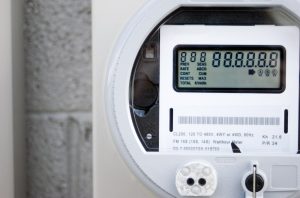Home > Energy Plans > Types Of Energy Plans
Types Of Energy Plans
Looking to find out about the different types of energy plans available in Australia? Find out about different energy plans here with Savvy
Author
Savvy Editorial TeamFact checked

When it comes to energy plans, there are various options available to you from different retailers. These plans all have slightly different pricing structures and tariff rates. It's essential to understand these varying options so you can choose the best plan for your needs and budget. Whether you prefer fixed rates or flexible time-of-use tariffs, find out all about the different types of electricity, gas and solar plans here with Savvy
What different types of electricity plans are there?
In Australia, energy retailers offer two basic types of electricity plans – standard retail plans, and market retail contracts. These cater to different consumer preferences and needs. These are the main types of electricity plans available:
1.Standard retail contracts:
The standard ‘no-frills’ retail contract is a basic energy plan that applies when you haven't chosen a specific market contract, or when your market contract has expired. It’s also known as a default plan. It usually offers standardised terms and conditions which are set by law, including no exit fees. This means you can switch to a better plan at any time, as these standard plans may not offer the best terms and conditions available in the market. Their features include:
- a set price tariff that can only be changed once every six months
- the price offered must reflect the Default Market Offer set by the Australian Energy Regulator
- standard terms and conditions
- no lock-in contract or exit fees
2. Market retail contracts:
Market retail contracts are the main product which energy retailers use to attract more customers. Therefore, there’s strong competition between retailers to offer the most attractive deals. They may come with bonus discounts and/or additional benefits, making them a more attractive option than a standard retail contract. They usually have a contract period of between one and two years. While they are usually cheaper than standard retail contracts, they may include exit fees and tariffs that can change at any time. Their features include:
- variable price tariffs which can change regularly in line with wholesale electricity prices
- bonus periods during which special discounts or reduced prices may apply
- other special offers such as sign-up cash bonuses, loyalty points or frequent flyer points
- locked-in contracts of one or two years
- exit fees may apply
Retailers must offer at least one market retail contract without exit fees, and any tariff changes (ie. price rises) must be promptly communicated to consumers.
Whether you opt for a standard retail contract, or explore the benefits of a market retail contracts, understanding the details and comparing available options will help you find the best electricity plan that suits your needs and preferences.
3. Green energy plans
Green energy plans refer to electricity plans that prioritise renewable energy sources over traditional ‘dirty’ fossil fuels. These plans aim to reduce carbon emissions and promote sustainability by selling energy from renewable sources such as solar, wind, hydro, and geothermal power.
The Australian Government's GreenPower scheme is a national initiative to encourage the uptake of renewable energy. Through this scheme, consumers can voluntarily choose to purchase accredited renewable energy in addition to their regular electricity supply. By paying a premium, households and businesses can support renewable energy projects and ensure that a percentage of their electricity consumption comes from clean sources.
Green or carbon neutral plans may not be the cheapest electricity plans available, but by agreeing to buy a percentage of your energy from renewable energy sources you will contribute to reducing Australia’s reliance on fossil fuel energy generation.
What different types of electricity tariffs are there?
In addition to standard and market retail plans, there are also several types of electricity tariffs available to consumers. The main tariff types include:
1. Single rate tariff: Also known as a flat rate or anytime rate, this tariff charges the same rate for electricity usage regardless of the time of day. It is a straightforward and common option.
2. Time-of-use tariff: This tariff charges different rates for electricity based on the time of day. Typically, it has peak, shoulder, and off-peak periods. Peak hours have the highest rates, shoulder hours have moderate rates, and off-peak hours usually offer the lowest rates.
3. Controlled load tariff: This tariff applies to specific appliances like electric hot water systems, pool pumps and underfloor heating systems. It provides a separate, lower rate for electricity usage during off-peak hours when demand is lower. A separate electricity meter is usually required to have a controlled load tariff in addition to normal power usage.
4. Demand tariff: With a demand tariff, the electricity cost is based on the peak demand for power, rather than total usage. Customers pay for the highest amount of electricity used at any given time, encouraging them to manage their energy consumption during peak periods.
5. Feed-in tariff: A feed-in tariff is the amount paid to you for excess electricity generated by your solar panels, and exported back to the grid. It allows you to earn credits on your bill, reducing your overall electricity costs.
Choosing the right electricity tariff depends on your energy use patterns and lifestyle. Some tariffs may be more suitable for households with higher daytime usage, while others may be beneficial for those who can shift their energy-intensive activities to off-peak hours. Comparing different tariff options can help you find the most cost-effective and suitable plan for your electricity needs.
What different types of gas plans are there?
Gas plans tend to be simpler than electricity plans, with less tariffs to choose from. Gas plans also come in standard contracts and market contracts, similar to electricity plans. However, there are three ways that your gas can be charged:
Single rate gas plan: Also known as a flat rate plan, this type of gas plan charges the same rate for gas usage regardless of the time of day. It offers simplicity and convenience as the rate remains constant.
Time-of-use gas plan: Similar to time-of-use electricity plans, this gas plan charges different rates based on the time of day. It may have peak, shoulder, and off-peak periods, with higher rates during peak hours and lower rates during off-peak hours.
Block gas plan: This type of tariff charges a specific amount of energy, called a ‘block,' at a fixed rate. Once you use up that block, any additional energy is charged at a lower rate. For instance, the first block of 30 megajoules (MJ) might cost 3.5 cents per MJ, while the next block of 30 MJ could be charged at 2.8 cents per MJ. It's a way to encourage efficient energy usage and offer cheaper rates for larger consumption on business energy plans.
What different types of solar electricity plans are there?
There are different solar plans available depending on the size of your solar system in relation to your energy use, and also whether you have battery storage connected to your panels.
Partial solar use:
If your solar panels cover only a portion of your daytime electricity needs, focus on a plan with low electricity usage rates. Since you'll still rely partially on the electricity grid to provide your power needs, a high feed-in tariff is less critical because you won't be exporting much energy.
Full solar household – no battery storage:
If you have a solar system that supplies almost your entire daytime energy needs, but you don’t have battery storage, prioritise a plan with cheap usage and supply rates. A high feed-in tariff is less important since you'll draw power from the grid only at night.
Excess solar generation:
If your solar panels consistently produce more energy than you consume, but you don’t have a battery to store this energy, consider a plan with a decent solar feed-in tariff (while still offering competitive usage rates.) This way, you can export surplus energy back to the grid and earn maximum credits.
Solar with battery storage:
For homes equipped with a solar storage system, a reasonable feed-in tariff remains important. While you rely less on the grid to supply your power, having competitive rates and possibly a time-of-use tariff will ensure you can recharge your battery, if necessary, at the lowest tariff rate when grid demand is low.
By considering these different scenarios, you can select the most suitable solar electricity plan that aligns with your solar panel output and energy consumption patterns.
Helpful energy guides
Compare energy plans
Disclaimer:
Savvy is partnered with Econnex Comparison (CIMET Sales Pty Ltd, ABN 72 620 395 726) to provide readers with a variety of energy plans to compare. We do not compare all retailers in the market, or all plans offered by all retailers. Savvy earns a commission from Econnex each time a customer buys an energy plan via our website. We don’t arrange for products to be purchased directly, as all purchases are conducted via Econnex.
Any advice presented above is general in nature and doesn’t consider your personal or business objectives, needs or finances. It’s always important to consider whether advice is suitable for you before purchasing an energy plan. For further information on the variety of energy plans compared by Econnex, or how their business works, you can visit their website.









